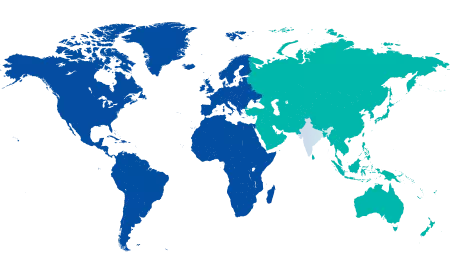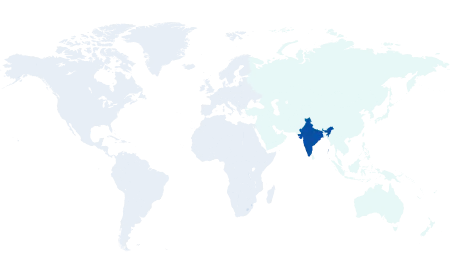-
Centre of
Excellence
Centre of Excellence
Other Specialities
- Allergy and Immunology
- Andrology
- Anesthesiology
- Dental Medicine
- Dermatology
- Diabetes and Endocrinology
- Ear Nose Throat
- Electrophysiology
- Fetal Medicine
- General Medicine
- General Surgery
- Geriatric Medicine
- GI Surgery
- Growth and Hormone
- Gynaec Oncology
- Hand Surgery
- Hemato Oncology
- Hematology
- Hepatobiliary Surgery
- ICU and Critical Care
- Infectious Disease
- Internal Medicine
- Interventional Radiology
- Kidney Transplant
- Lifestyle Clinic
- Medical Gastro
- Medical Oncology
- Microbiology
- Minimal Access Surgery
- Neonatology & NICU
- Nuclear Medicine
- Nutrition And Dietetics
- Ophthalmology
- Oral Maxillo Facial Surgery
- Paediatric Urology
- Pain Medicine
- Parkinson Disease and Movement Disorder
- Pathology
- Pharmacy
- Physiotherapy
- Plastic And Cosmetic Surgery
- Psychiatry
- Pulmonology (Respiratory and Sleep Medicine)
- Radiology
- Radiotherapy (Oncology Radiation)
- Renal Sciences
- Surgical Gastro
- Surgical Oncology
- Transfusion Medicine
- Vascular and Endovascular Surgery
Speciality Clinics
- Doctors
- Dhakuria
- International Patients



Clinics








- Self Registration
- Mars - Ambulance
- Corporate & PSU
- Insurance Helpdesk
- Awards And Achievements
- Careers
- Contact Us

PEG Placement
Best Peg Tube Placement Treatment in Dhakuria
Percutaneous Endoscopic Gastrostomy (PEG) placement is the surgical intervention to place a feeding tube to allow the patient to receive nutrition through the stomach (enteral feeding). The placement of the PEG tube is considered when the patient is unable to swallow or receive adequate nutrition through the mouth.
Before surgery
The doctor will discuss the surgery, its risks, and its benefits before the procedure. Inform your doctor about any medications you take or your history of allergies. There may be modifications to the medications you take. Avoid eating and drinking before the procedure.
During surgery
Before starting the surgery, you will be given anaesthetics and antibiotics. A small incision will be made in your upper abdomen, and the feeding tube will be inserted through the incision. The doctor will connect the tube to your stomach. The entire procedure takes about 20 to 30 minutes.
After surgery
You may experience some pain for 1 or 2 days after surgery. When the area around the PEG tube heals, you will have to meet a dietician. They will guide you on how to use the PEG tube.
PEG tubes are the preferred form of feeding for patients who require long-term enteral nutrition. Individuals with PEG tubes can safely obtain the required amount of nutrition. If you are looking for the best Peg Tube Placement Hospital in Dhakuria, visit Manipal Hospitals.
FAQ's
A PEG tube is preferred for those who cannot eat and drink enough to meet their daily requirements. Some of the conditions in which a PEG tube is recommended are:
-
Difficulty swallowing or those who cannot swallow correctly
-
Stroke patients
-
Children with birth defects
-
Individuals with cancer of the mouth or oesophagus
-
Individuals dealing with diseases of the oesophagus
-
Malnourished patients unable to take food by mouth
-
Individuals who continuously aspirate while eating
PEG placement is considered when alternative feeding options are required for the long term. The procedures can be carried out only if the patient can digest the food normally when it reaches the stomach.
After a physical examination by your doctor, you may need additional tests, such as:
-
Blood tests
-
Urine tests
-
X-ray of the stomach
-
Endoscopic procedure to view inside the stomach
These additional tests will help plan for PEG placement surgery.
PEG tube feeding is considered one of the best methods of providing nutrition to patients who cannot eat normally for more than 2 to 4 weeks. This is a more convenient, safer, and more comfortable method of feeding compared to others.
A specially formulated liquid feed will be given through the PEG tube. Some patients can eat or drink normally through their mouths while receiving extra feeds through the PEG tube. Consult a dietician to know what special feeds you may need each day.
The feeds must be given through PEG tubes at set times during the day using a syringe. Sometimes, a pump may be used to deliver the right amount of feed through the tube. You or your caregiver will be educated about the right methods of administering the feeds through the tube.
You can develop the following complications:
-
Accidental dislodgement of the tube
-
Bleeding or perforation
-
Infection or pain in the area of PEG tube placement
-
Leakage of stomach contents from the tube
-
Reactions to the anaesthesia
-
Aspiration
-
Blockage of the tube
Our highly skilled gastroenterologists at Manipal Hospitals, Dhakuria, West Bengal, will ensure a safe PEG tube placement with minimal complications.
Most patients who undergo PEG placement have difficulty swallowing through the mouth. Therefore, after PEG placement, they receive liquid nutrition through these tubes. However, some patients may continue to eat and drink small quantities of food through the mouth. For more information, you may speak to your healthcare provider.
The PEG tube can be cleaned by flushing the tube with warm water with the help of a syringe before and after feeding or receiving the medication. The open end of the PEG tube is cleaned with an antiseptic wipe.
Sterile water is recommended for flushing the PEG tube in the following cases:
-
Immuno-compromised patients
-
Critically-ill patients
-
Children under 12 months of age who are hospitalised
Boiled and cooled water is used for flushing the PEG tubes of children under 12 months who are being cared for at home. Warm water can be used in all other patient groups.
PEG tubes can be placed for several months or years. However, with time, your PEG tube can become clogged or wear down. When this happens, you may notice bumps, leaks from the tube, or indentations on the tube.
If the PEG tube has to be replaced, it can be done without surgery or anaesthesia. If the tube has to be removed, it can be taken out without surgery, and the stomach heals by itself.
If the PEG tube is blocked, try flushing the tube with warm water. If the tube does not unclog, do not use wires or other materials to unclog the tube. Instead, contact your healthcare provider.
If the PEG tube dislodges or falls out, you must immediately call your doctor. There is a possibility for the opening in your stomach to close after the tube comes out. Therefore, you must consult the doctor within 24 hours of tube dislodgement.
Home Dhakuria Specialities Medical-gastro Peg-placement



You’re on Our Indian Website
Visit the Global site for International patient services











